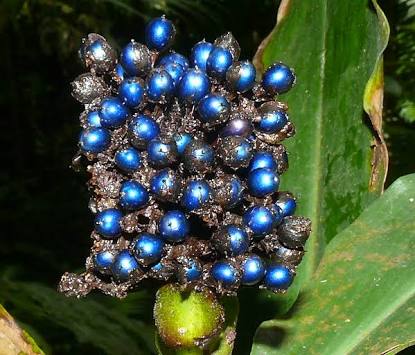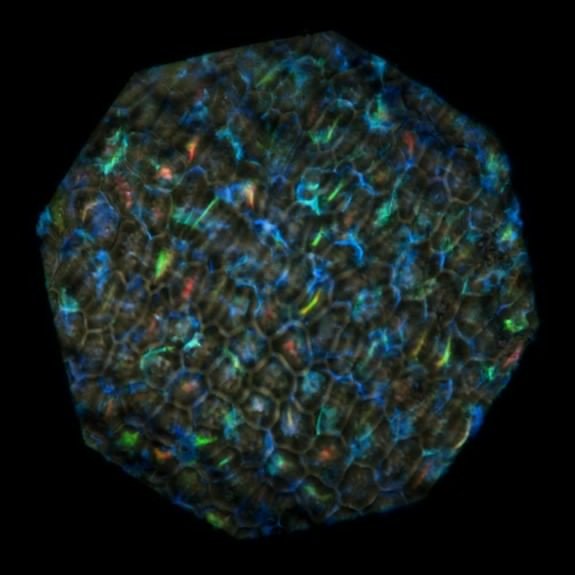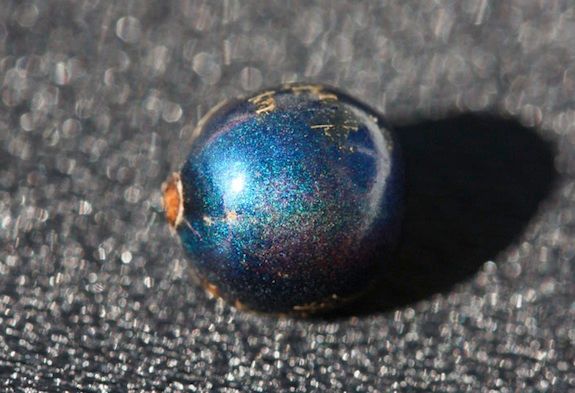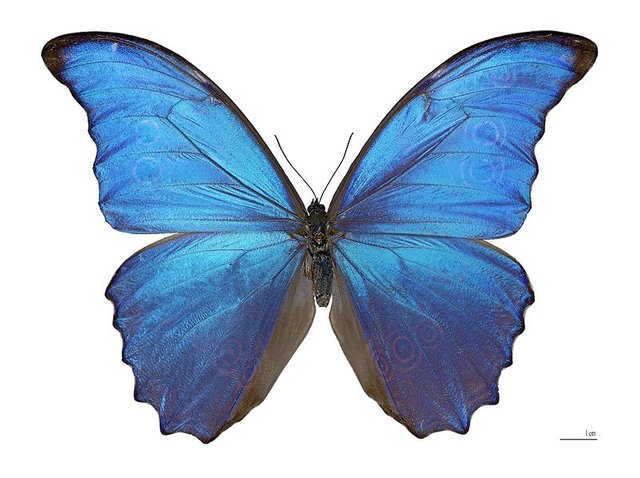NATURE'S BEST SHOTS--- The Pollia Condensata and iridescence.
Evidently, nature had it's way in making fake look more better than the real thing expected. This is the case of an African fruit known as Pollia Condensata. I'm going to be unleashing a detailed information about this naturally unique, irresistible, multi-coloured plant.

The Shiny Blue Pollia Condensata
Author: Juliano Costa
Uploaded by Juliano Costa
Licensed by CC BY-SA 3.0
POLLIA CONDENSATA
Kingdom: Plantae
(unranked): Angiosperms
(unranked): Monocots
(unranked): Commelinids
Order: Commelinales
Family: Commelinaceae
Genus: Pollia
Species: P. condensata
Botanical name: Pollia condensata
[Scientific Classification ](https://en.m.wikipedia.org/wiki/Taxonomy_(biology)
The Pollia Condensata also known as Marble Berry is wild plant which grows in the tropical forests of some African countries including Ghana, Ethiopia, Mozambique and Tanzania. The plants origin is traced to Angola, in western Africa. Its leaves are large, smooth and narrow; having a stem about 60 cm high from which pale pink or whitish flowers sprout. The diameter of the fruit capsule is about 4mm.
Its fruits are amazing small berries, (even smaller than the blueberry). I call it amazing because of its vibrant blue colour which is of special in the characteristics of this plant.
Of all living things, only two come close to the Pollia berry terms of color: the scarab beetle and the morpho butterfly. Just like the beetle, the berry's skin has no pigment (colored cells). Instead, the cells form sheets, like the skin of an onion and are delightfully coiled in a peculiar twist. In these cells are layers through which light is filtered down to create something called "structural color." However, this tiny, rock-hard seed can’t be eaten raw, cooked or turned into a beverage. Suprised?This small metallic fruits can retain is shiny colour for years and are practically used for decoratve purposes in Western Uganda and elsewhere.
WHY IS IT SO?
From our knowledge of biology, we know that most plants are green because of the chlorophyll pigment, used in photosynthesis, which absorbs most wavelengths of visible light except green, reflecting that color into our eyes. As a result of this pigmentation, no matter the angle from which we view this plants from, they appear to have same hue but the colour fades when plant dies.
Reverse is the case here as the Pollia condensata, exhibits its vibrant blue via tiny, nanoscale-size cellulose strands that are piled inside its skin. They arrangement of these strands are arced helix-shaped twisting layers, which interact with each other to disperse light and produce the fruit’s deep blue coloration.
At the cellular level, we can see the well pronounced colours of the fruit as shown through an electron microscope
 Author: Joseph Stromberg
Author: Joseph Stromberg
smithsonianmag
Depending on how you hold the fruit and from what angle you view it, each of its skin cells actually appears to change color.( On a personal note, I'm pretty sure you'll appreciate the fascinating quality these strands give to the plant.) According to scientists, it was discovered that each individual cell independently generates colour, this in turn produces a pointillist or pixelated effect (just like those in the Seurat paintings). In the cellulose layers of the cell wall, reflection of light of specific wavelengths occurs, thus producing this colour. One awesome thing of note is that the thickness of the layers determines which wavelength of light is reflected. That results in some of the cells having thinner layers and reflecting blue while some others have thicker layers, reflecting red or green.
SEED DISPERSAL
The mechanism for seed dispersal is virtually a return of the intense colouring nature of the plant. From research, birds maximize its us by means of impressing their mates or even beautifying their nests and are attracted to it - although the Pollia fruit has no nutritional value. 
The pixelliated fruit
Source Smithsonianmag
And here's the ploy!
It mimics the appearance of a juicy, nutritious plant(adaptation). This colour often tricks birds and animals into consuming the fruit, thus dispersing its seeds up defecation without wasting any photosynthetic reserves on bird food.
It is true that animals are major means of seeds dispersal, however most plants are forced into producing some sweet, juicy pulp. The P. condensata however spreads its seeds by exhibiting the eye-catching colours alone. Quite astonishing, isn't?
Another Kind - The Morpho butterfly
As noted earlier, a good number of
natural plants and animals display changing bright colours when viewed from varouus angles- Iridescence. The diversification in patterns and colouration of butterflies makes them to be generally recognized in the order of insects. According to studies, the unique colour patterns evolved as due to various causes, such as mimicry, camouflage, sexual selection and conspecific recognition.
Wikipedia Author:Didier Descouens
Licensed by CC BY-SA 4.0
Just like the P. Condensata, the butterfly has no pigments and reflects the lights through varing wavelengths. On the wings, the scales have pigments which absorbs selective wavelengths.They exhibit pigmentary and structural coloration and are frequently combined. These colours are due to the interaction of the light with the lattice of the scales. In the scales of these butterflies are microstructures such as cross-ribs, microribs, ridges and ridge-lamellae which are responsible for coloration. Have you ever thought of those beautiful colours formed in soap bubbles? It is formed due to interference. That is the same principle at work in the wings of the butterfly!
The structural color is due to constructive interference of these structures and air in model in multiple instances.
One benefit of iridescent butterfly wings is that it helps it avoid potential predators. You might have noticed during flight, that there is an continuous change from bright blue to dull brown on the upper surface of the wings. This is because the oscillating motion varies the angle of light striking the wings. These colours seem to disappear and reappear as the wings are flapped during flight, looking more like celestial flashes of blue bright light.
MY THOUGHTS
From studies made by some researchers, they determined that the fruit’s tissue is more intensely colored than any previously studied biological tissue (plants and animals) as it reflects a whooping 30 percent of light, compared to a silver mirror, and clearly making it more brilliant than even the widely recognized Morpho butterfly’s wings in colour.
When studying this plant, something struck me; We can take inspiration from nature.
Our researchers can obtain smart multifunctional materials by taking a cue from the P. condensata and even use materials like cellulose which are relatively cheap for our cosmetics, food (non-toxic colorant) and textile industry.
You too can take a tour and discover
more about the Pollia condensata
What do you think?
REFERENCES
African fruit "brightest" thing in nature
I'm sure you enjoyed this ride. For more of these Nature's Best shots or other articles, kindly click on the follow button. Some discussions? Feel free, let's interact using the comment section. Do have a awesome day.

Wow...this is truely nature's best sho...i enjoyed the beauty of this content.
You are welcome @mrxplicit......thanks.
Congratulations @bright1! You have completed some achievement on Steemit and have been rewarded with new badge(s) :
Click on any badge to view your own Board of Honor on SteemitBoard.
For more information about SteemitBoard, click here
If you no longer want to receive notifications, reply to this comment with the word
STOP